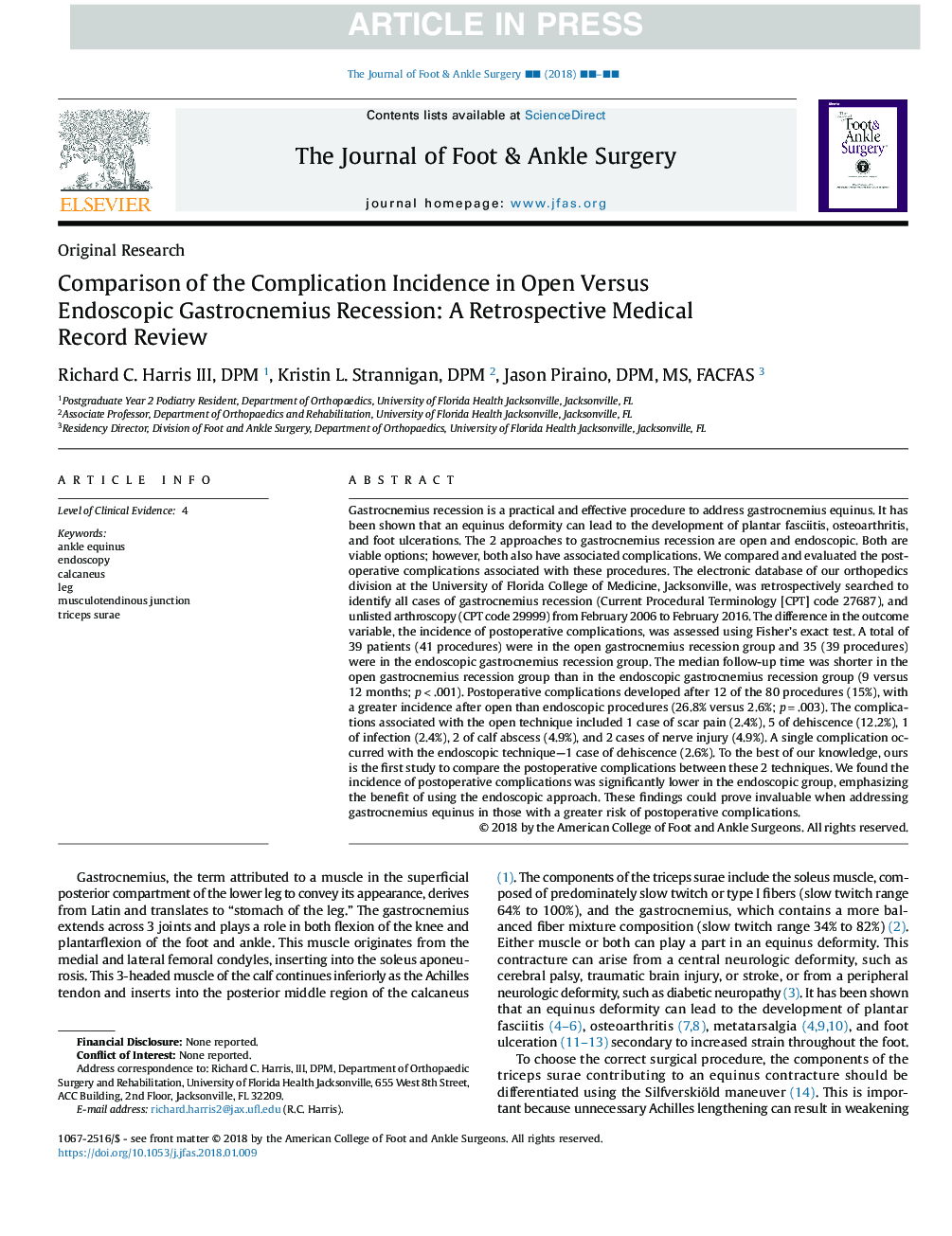| Article ID | Journal | Published Year | Pages | File Type |
|---|---|---|---|---|
| 8602853 | The Journal of Foot and Ankle Surgery | 2018 | 6 Pages |
Abstract
Gastrocnemius recession is a practical and effective procedure to address gastrocnemius equinus. It has been shown that an equinus deformity can lead to the development of plantar fasciitis, osteoarthritis, and foot ulcerations. The 2 approaches to gastrocnemius recession are open and endoscopic. Both are viable options; however, both also have associated complications. We compared and evaluated the postoperative complications associated with these procedures. The electronic database of our orthopedics division at the University of Florida College of Medicine, Jacksonville, was retrospectively searched to identify all cases of gastrocnemius recession (Current Procedural Terminology [CPT] code 27687), and unlisted arthroscopy (CPT code 29999) from February 2006 to February 2016. The difference in the outcome variable, the incidence of postoperative complications, was assessed using Fisher's exact test. A total of 39 patients (41 procedures) were in the open gastrocnemius recession group and 35 (39 procedures) were in the endoscopic gastrocnemius recession group. The median follow-up time was shorter in the open gastrocnemius recession group than in the endoscopic gastrocnemius recession group (9 versus 12 months; pâ<â.001). Postoperative complications developed after 12 of the 80 procedures (15%), with a greater incidence after open than endoscopic procedures (26.8% versus 2.6%; pâ=â.003). The complications associated with the open technique included 1 case of scar pain (2.4%), 5 of dehiscence (12.2%), 1 of infection (2.4%), 2 of calf abscess (4.9%), and 2 cases of nerve injury (4.9%). A single complication occurred with the endoscopic technique-1 case of dehiscence (2.6%). To the best of our knowledge, ours is the first study to compare the postoperative complications between these 2 techniques. We found the incidence of postoperative complications was significantly lower in the endoscopic group, emphasizing the benefit of using the endoscopic approach. These findings could prove invaluable when addressing gastrocnemius equinus in those with a greater risk of postoperative complications.
Related Topics
Health Sciences
Medicine and Dentistry
Orthopedics, Sports Medicine and Rehabilitation
Authors
Richard C. DPM, Kristin L. DPM, FACFAS, Jason DPM, MS, FACFAS,
